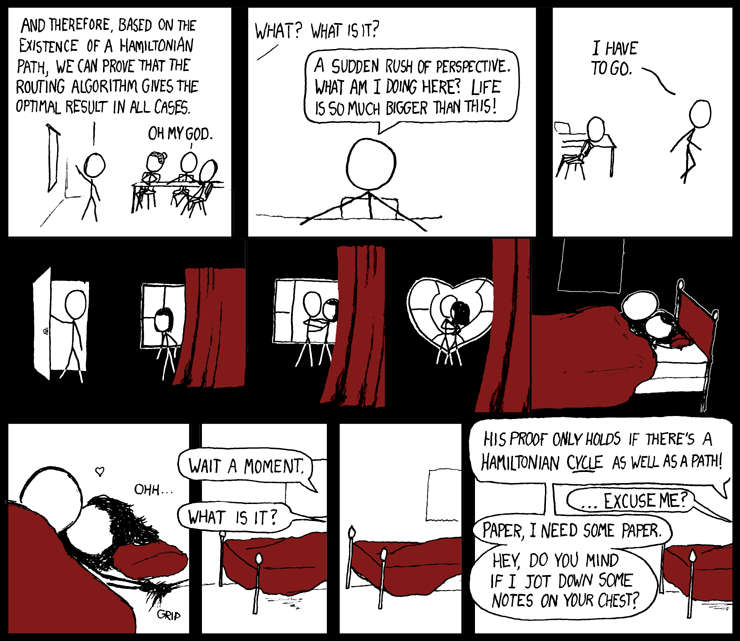Sorry, when I see you talking about topology and group reps I keep forgetting you're a mathematician, not a physicist.Gosh, you guys leave me breathless! WTF is P (parity??) What is T? Please , please for the sake of we poor outsiders, define your terms!
Sorry to be a bore about this, but I am trying hard to keep up. And assuming I knew what the operators P and T are (I don't), what is the difference between P,T and PT?
That's not an insult, I was a mathematician when I learnt this stuff but I went down the mathematics of theoretical physics path.
P, T and C are the 3 discrete symmetries of field theory. C isn't relevent here (it swaps particles and antiparticles) but P and T are. Given a 4 vector (t,x,y,z) we have :
Spacial parity P : P(t,x,y,z) = (t,-x,-y,-z)
Time parity T : T(t,x,y,z) = (-t,x,y,z)
So PT(t,x,y,z) = (-t,-x,-y,-z)
For operators you have $$A \to OAO^{-1}$$, so you get that $$\Lambda \to \Lambda ' = P\Lambda P^{-1}$$ and so on. Hence you get that under these parity operators you end up doing things like going from the physicists Lorentz group with $$\{\Lambda^{0}_{0} \geq 1\} \; \cup \; \{ |\Lambda| = 1\}$$ to the three other options :
T : $$\{\Lambda^{0}_{0} \leq -1\} \; \cup \; \{ |\Lambda| = 1\}$$
P : $$\{\Lambda^{0}_{0} \geq 1\} \; \cup \; \{ |\Lambda| = -1\}$$
PT :$$\{\Lambda^{0}_{0} \leq -1\} \; \cup \; \{ |\Lambda| = -1\}$$
I think that's what they do. Whatever it is precisely, you can see that the three P, T and PT map to the other 3 parts of the full Lorentz group from the physicist's Lorentz group.
You need the part connected to the identity, since you must be able to consider varying your transformations smoothly down to the identity, because you can rotate your coordinates by $$\theta$$ and/or boost your description by a velocity v and obviously you must be able to vary them smoothly down to 0.how would you set about choosing which one to take?


